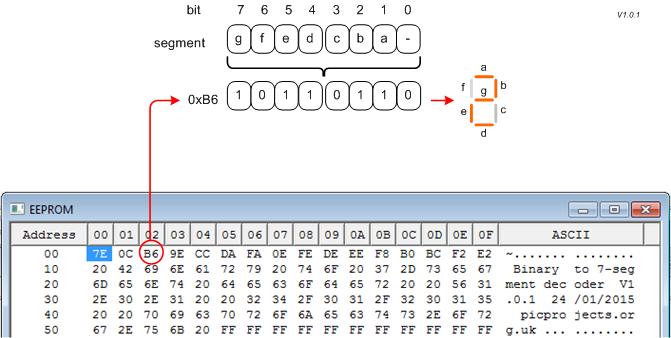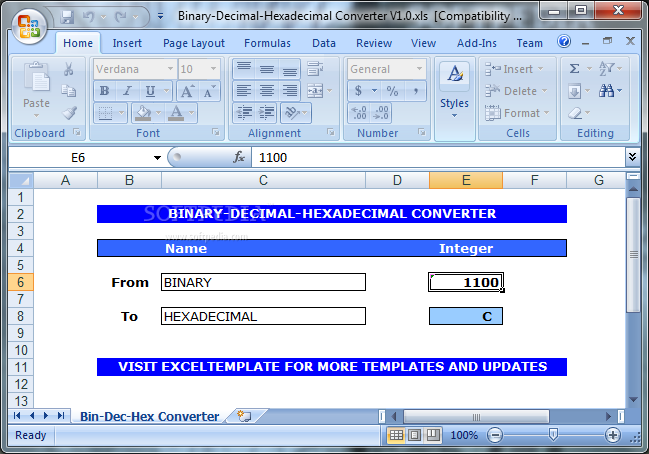
- Binary to hexadecimal decoder how to#
- Binary to hexadecimal decoder driver#
- Binary to hexadecimal decoder download#
The segment patterns can be stored in 8-bit latches or pairs of 4x4-bit register files. Option 4 is to do it in software, which of course allows you absolute flexibility over which segments to light, including the decimal point.

Obviously this should be multiplexed across all digits needed, instead of replicated, and this can be done using a 3-to-8 decoder and a free-running counter. So this is entirely feasible to build by hand and, crucially for my intended use, requires only a soldering iron to make fully functional.
Binary to hexadecimal decoder driver#
Some doodling suggests that 44 diodes are needed if you use them to turn segments *off* instead of on, an average of less than 3 diodes per digit instead of more than 4 for the positive sense, at the expense of requiring a driver IC on the output to invert the sense, but a saving of allowing them to be small-signal diodes instead of having to handle LED current directly. Option 3 is to hand-build a 16x7 ROM using diode logic and a 4-to-16 decoder. But you still need a chip programmer run before your display is usable, and it generally doesn't feel like an "elegant" solution. A 32Kx8 ROM will handle the same three nybbles and three select lines without limitation. Option 2 is to program a ROM to do the job. The upside is that it's a single-chip direct replacement for a hex decoder. An unavoidable downside is that you have to run a GAL compiler and use a chip programmer to set it up. I have no idea whether it can do all that while processing the logic correctly, or whether some pins have to be reserved as internal nodes. A 22V10 has enough pins to read 3 nybbles and 3 select lines while producing a 7-bit decoded drive signal a 16V8 could be used for a single digit, or possibly a pair. Option 1 is to program a GAL to do the job. Unfortunately, the only 7-segment decoders still in production decode only BCD, not hexadecimal, even though the hex decoders are strictly more useful and are unlikely to cost significantly more to produce. The obvious solution in times gone by would have been to drop in a 7-segment LED display and decoder chip for each nybble, or possibly to multiplex one decoder chip across several displays and input nybbles. jpg extension if you click on the "Download Solution" link at the bottom of the solution panel.A common need for debugging purposes is a simple hexadecimal readout of a byte's or word's worth of binary signals.
Binary to hexadecimal decoder download#
You can copy the generated solution by clicking on the "Copy Text" link, appaers under the solution panel.Įven you can download the solution as an image file with. To check the hexadecimal equivalents of other binary numbers you can clear the input box by clicking on the CLEAR button under the input box.

You can create your own examples and practice using this property. You can see the result and explanations below the calculator. If you use this property, a random binary number is generated and entered to the calculator, automatically. You can click on the DIE ICON next to the input box. You can enter a binary number to the input box and click on the " CONVERT" button.

You can use binary to hexadecimal converter in two ways.
Binary to hexadecimal decoder how to#
HOW TO USE BINARY TO HEXADECIMAL CONVERTER?

Computes the hexadecimal equivalent of the entered binary number,.


 0 kommentar(er)
0 kommentar(er)
